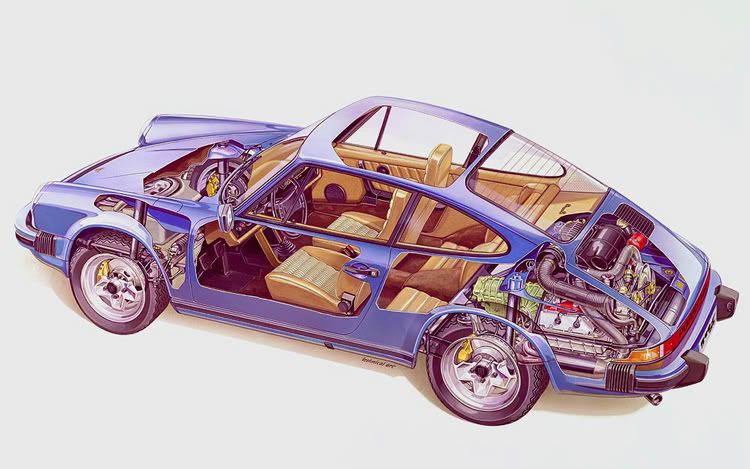Can any of you suggest a good book on the history of the Cosworth DFV?
Ted
- Login or Register
No account yet? Sign up


In 1966 Colin Chapman (Lotus Cars founder and principal of Team Lotus) persuaded Ford to bankroll Keith Duckworth's design for a new lightweight Formula 1 engine. Cosworth received the order along with the £100,000 that Ford felt it adequate to spend on such an objective. The design merged two in-line four-cylinder FVA units (as used in 1.6 L form in Formula 2) into a single 90° V8 engine, thus creating a legend in its own right, the DFV (standing for "double four valve"). This engine and its derivatives were used for a quarter of a century, and it was the most successful in the history of Formula 1/Grand Prix motor racing. Winning 167 races in a career lasting over 20 years, it was the product that put Cosworth Engineering on the map. Although originally designed for Formula One, the engine has been modified to be used in a range of categories.
The DFV won on its first outing, at the 1967 Dutch Grand Prix in the hands of Jim Clark, fitted to a Lotus 49, and from 1968 was available for purchase to any F1 team that wished it. During the 1970s it was not uncommon for almost the entire field (with the notable exception of Ferrari) to be using one of these engines (this at a time when independent wealthy individuals could buy exactly the same engine off the shelf that was also being used by McLaren et al). Most teams just built a tub around a Cosworth DFV and a Hewland gearbox. It won a record-holding 155 World Championship races, the last being Detroit in 1983, powering a Tyrrell driven by Michele Alboreto.
Although the DFV did not produce as much power as some V12 engines that some teams ran, it was lighter resulting in a better power/weight ratio. In addition to being lighter, it was also made a structural part of the car itself, by placing load bearing arms to stress the block. These design aspects appealed tremendously to the genius of Colin Chapman who utilized them to the fullest extent.
The DFY, introduced in 1982 was a further evolution of the DFV for Formula One, with a shorter stroke and a DFL bore, thereby producing more power, but still unable to fight against the turbocharged cars of the day. It was the advent of turbocharged engines in Formula 1 which sounded the death knell for the venerable DFV, and in 1986 Cosworth returned to the lower formulae preparing the DFV for the newly-created Formula 3000, with the installation of a compulsory rev limiter, which scaled power back from 500 to 420 hp; the DFV remained in this class until 1992.
In F1, a new DFV-based design was introduced for the new 3.5 L normally-aspirated rules in 1987. The DFZ was produced as an interim model, but in 1988 Cosworth created the DFV's final evolution, the DFR, which soldiered on in F1 with smaller teams until 1991, scoring its last points - including a pair of second places by Jean Alesi - with Tyrrell in 1990.
The DFV has recently been given a new lease of life thanks to the interest in Classic F1 racing, which was given a World Championship status by the FIA in 2004.
[edit]
DFV variants
Throughout the years, the DFV spawned a number of derivations. In 1968, Cosworth created the DFV's first derivation, a 2.5 L version for the Tasman Series, the DFW.
One of the most successful and longest-lived projects of Cosworth has been its CART/Champ Car engine program. In 1975, Cosworth developed the DFX, by destroking the engine to 2.65 L and adding two turbochargers, the DFX became the standard engine to run in Indycar racing, ending the reign of the Offenhauser, and maintaining that position until the late 80s. Ford backed Cosworth with creating a new interim design for Indycar racing in the late 80s, the DFS, which merged DFR technology into the aging DFX design, but it was eventually rendered obsolete by advancing technology.
While designed as an F1 engine the DFV was also used as in endurance racing, its flat-plane design lead to destructive vibrations putting stress on devices surrounding the engine, especially the exhaust system. Despite this handicap the DFV won the 24 hours of Le Mans twice in its original 3.0 L form. A special endurance version, the DFL, was then developed in two versions: one with 3.3 L and the other with 3.9 L. Whilst the former version soon became known for its reliability, the latter version was a step too far and is remembered as a failure.